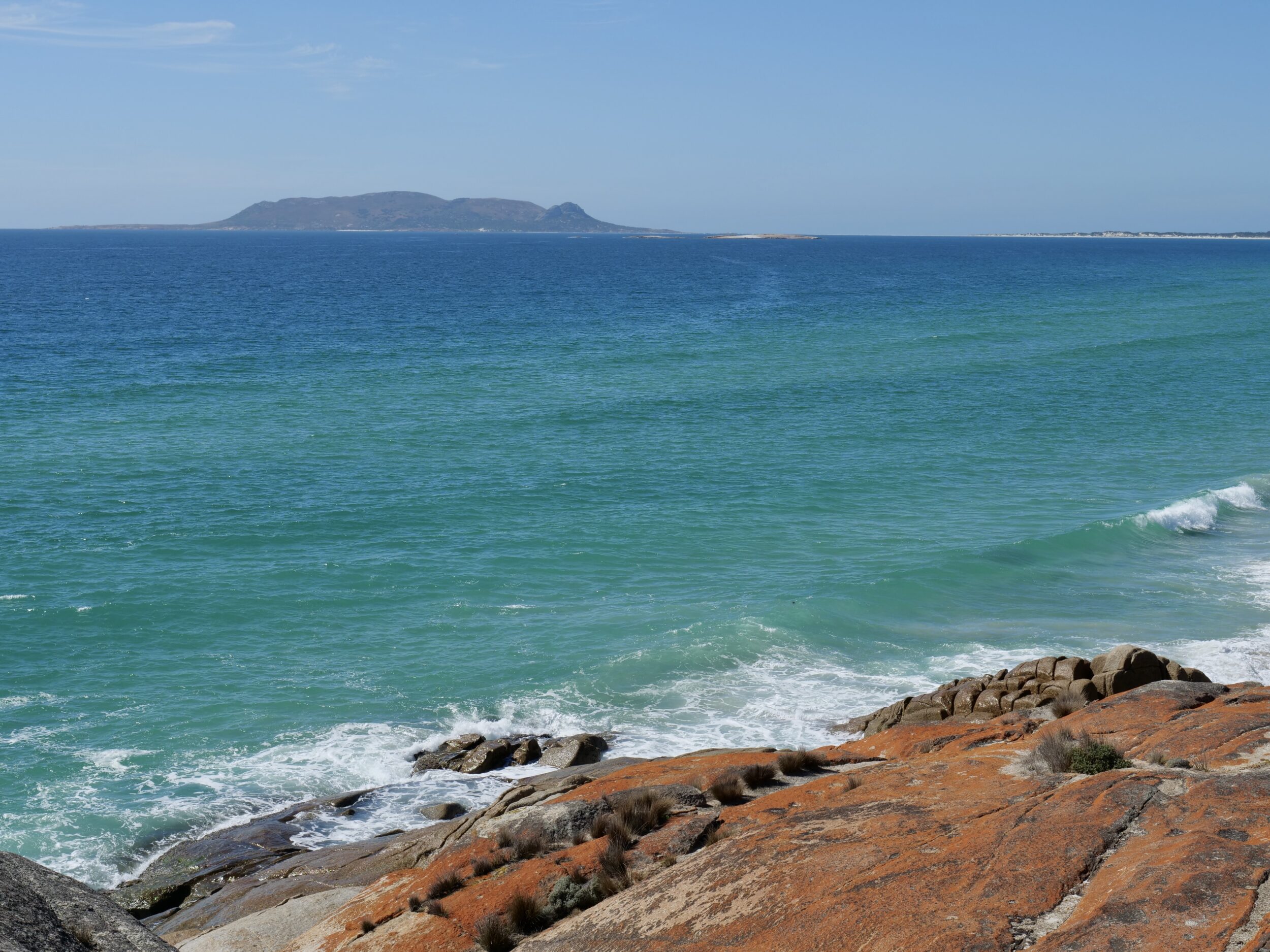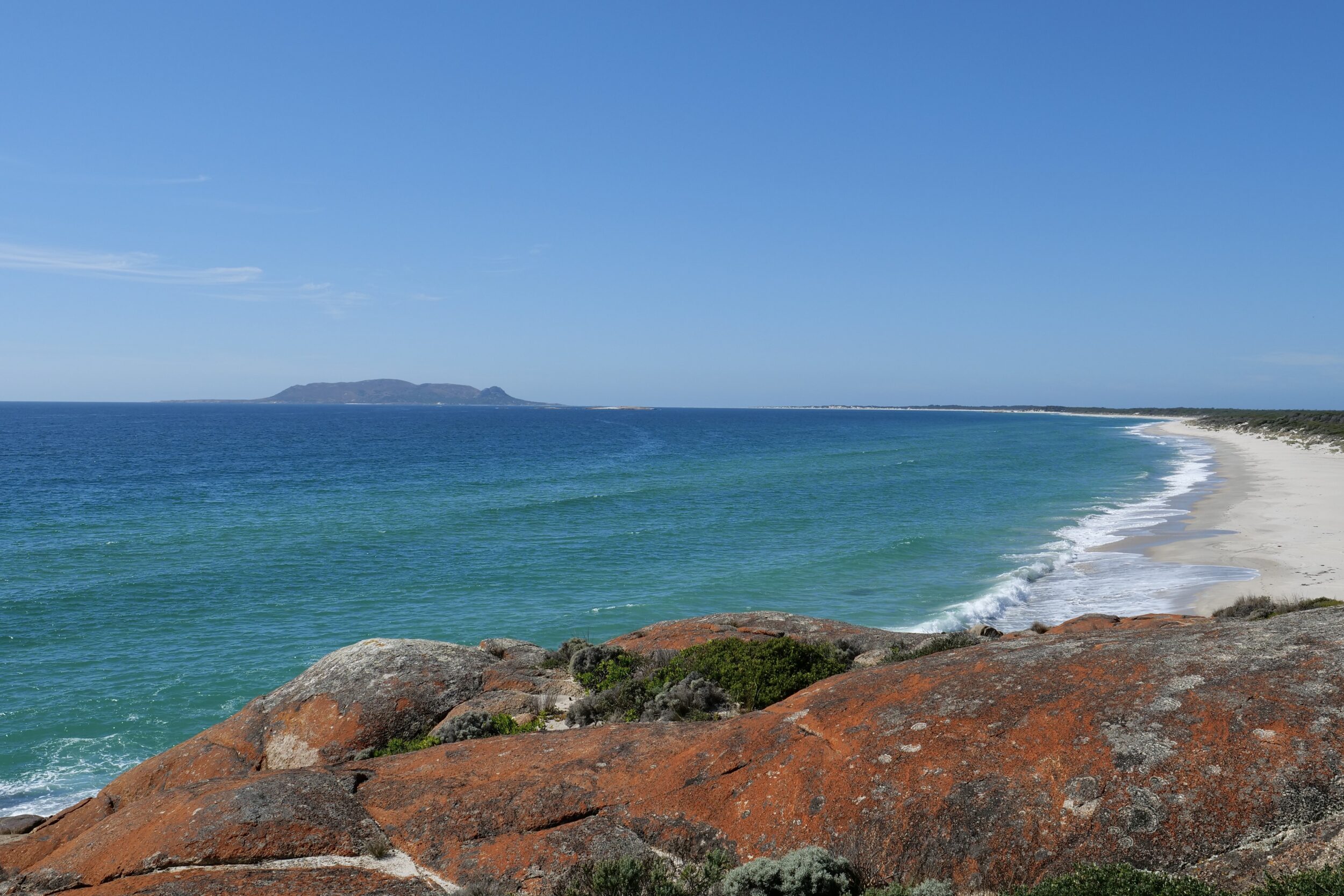This post’s photos were both taken from atop Red Bluff, circa midway along Flinders Island’s east coast.
No bird is visible in either image.
Both the wide angle and “normal perspective” images – respectively, 34mm & 58 mm – look to Babel Island, which covers just 440 hectares.
During one large seabird’s breeding season, this small island is home to a deal more than six million individuals!
You are looking at the site of the world’s largest shearwater “colony”.

The relevant species is Ardenna tenuirostris, the short-tailed shearwater, aka “muttonbird”.
One of the 32 living shearwater species, the muttonbird is Australia’s most abundant seabird.
Muttonbirds number circa 23 million.
Each Australian spring/summer they breed only on southern Australian (mostly, Tasmanian) islands.
They then fly back to the Arctic and sub-Arctic.
It is not uncommon for a migrating muttonbird to cover more than 800 kilometres in a single day – more than the “as the jet flies” distance between Sydney and Brisbane.
Click here to discover more.
Around 200,000 fledglings are harvested from Bass Strait islands each year; muttonbirds were already a prized food for humans, thousands of years before Europeans “discovered” Australia.
“Mutton-birding” occurs immediately after the adult birds have “deserted” their offspring, and headed north.
At that point the chicks are larger than their parents.
Each breeding pair raises one chick, from a single egg.
The youngsters fledge whilst still in the burrows their parents had made for them.
Click this for a 21st century account of mutton-birding on Flinders Island, and of local humans’ delight – or not – in eating them.

Comments